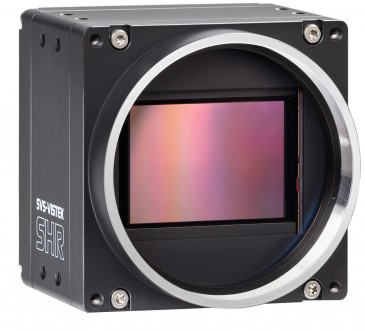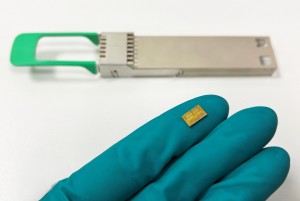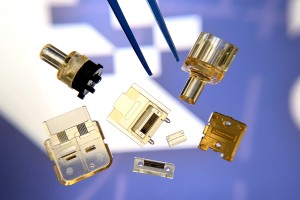-

High-Voltage CMOS Backplane for Very Bright OLED Microdisplays
A common method to increase the brightness of OLEDs while maintaining a long lifespan is the use of multiple stacked OLEDs. Scientists at the Fraunhofer Institute for Photonic Microsystems IPMS have now developed an innovative... -

Making Defects 'Sing' in 3D-Printed Metal Parts
Additive manufacturing, or 3D printing, has drastically improved the uniformity and speed of metal parts manufacturing, but the printed parts are often plagued with defects, such as pores, that limit their performance. The... -

A Surprise Contender for Cooling Computers: Lasers
Sandia National Laboratories is helping a tech company test a bright new idea for cooling computers. Minnesota-based startup Maxwell Labs has entered into a cooperative research and development agreement with Sandia... -

Breaking Limits: A Technology for Deep Vascular Visualization
Researchers at Saratov State University and their colleagues have developed an innovative approach to improving the visualization of subsurface blood vessels using laser speckle contrast imaging (LSCI) enhanced with principal... -

Imec Pioneers Photonic Code-Division Multiplexing FMCW 144GHz Distributed Radar
imec – a world-leading research and innovation hub in nanoelectronics and digital technologies – has successfully built and tested a proof-of-concept photonics-enabled code-division multiplexing (CDM)... -

Terahertz Wave Control for Enhanced Wireless and Biomedical Technology
Terahertz (THz) waves are located between microwaves and infrared light in the electromagnetic spectrum. They can pass through many materials without causing damage, making them useful for security scanning, medical imaging, and... -

The Changing Sky That Plants See
Researchers from Kyushu University have developed a new numerical model to explain the behavior of sunlight under various weather conditions. Unlike previous methods that focused on how plants perceive sunlight as a pure source...
-

Ultrafast Laser Method Assists in Directing Light
Photonic technologies and applications often require light signals to be manipulated in three dimensions such as in optical computing, fiber imaging, data transport and quantum technologies. To be useful, the shape and direction of light must be... -

Sub-50 Femtosecond Pulse Lasers for Gentler Multiphoton Microscopy
Finding the ideal ultra-fast laser source for a multiphoton imaging setup is not trivial. It is a fine balance between peak power, pulse energy and laser wavelength. In this white paper we discuss important laser parameters and the impact these... -

Optics Measure How Microplastics Hinder Light Flow in Our Oceans
Plastics have only been around since the 1950s and yet they’re everywhere: scattered in our lakes, rivers, floating on the top of oceans, and dropping to the bottom. Back in the 1950s and 60s, plastics were hailed as a useful invention, used... -

Terahertz Microscopy Explores New Material for Solar Cells
A team of scientists from the Department of Energy’s Ames National Laboratory gained insight into a possible alternative material for solar cells. The team, led by Jigang Wang, senior scientist from Ames Lab, developed a microscope that uses... -

Gaps noted in lung cancer diagnostics and treatment
Lung cancer is most common cancer in men and the 2nd most common cancer in women according to World Cancer Research Fund International. Lung cancer is the leading cause of cancer death overall and among both men and women, according to the American... -

Advances in Optical Coherence Tomography
Optical coherence tomography (OCT) uses light for cross sectional imaging and is most commonly used for medical diagnostics, but it also has uses in applications such as analyzing paint on automobiles, nondestructive testing, and more. The global... -

Brain Research Advances with Light-Based Technologies
Common methods of brain imaging present many challenges: some are invasive, others may contain harmful radiation, and many are difficult to use or require the patient to remain absolutely still throughout the process. Today researchers are...


























































